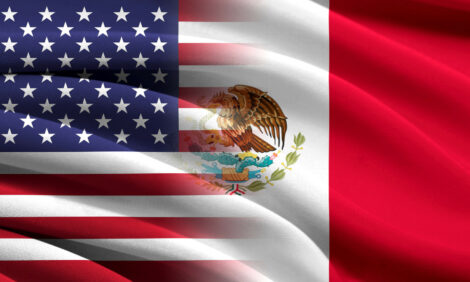



US Retail Meat Prices Declining
US - Retail meat prices continue to decline but the pace of price adjustment has been lagging the general increase in overall meat supplies, according to the latest 0Daily Livestock Report published by Steiner Consulting Group, DLR Division, Inc.The result has been significant downward pressure at both the farm and wholesale level, with lower prices needed to clear the market. The downward adjustment at retail generally tends to be slow and, in the short term, can create price imbalances downstream.
The latest CPI data reveals how slow this adjustment process has been at retail. We think at foodservice prices have been even more sticky.
The retail beef price index in October was reported at $5.73 per pound, 2.2 per cent lower than the previous month and 7.9 per cent lower than a year ago. But significant as the decline in retail prices has been, wholesale beef values have declined even faster.
The average choice beef cutout value in October, a measure of beef prices at wholesale, was $1.82 per pound, 3.1 per cent lower than the previous month and 13.8 per cent lower than a year ago. The disparity in price adjustments becomes even more significant if we take a step back and consider price progression over the last few years.
Cutout retail beef prices still are near the levels we saw in 2014 and about 16.4 per cent higher than what it was five years ago. The choice beef cutout, on the other hand, is now 1.7 per cent lower than what it was back in 2011.
In the last five years, higher prices at retail forced some consumers to adjust their eating patterns. Beef became one of those items that, for some consumers, did not even factor in their day to day shopping given the hefty price tag. And while beef supplies have recovered, it will take some time before we get back some of the demand lost in recent years and even lower prices are needed to accomplish that.
One thing to keep in mind from the retail price series is that it is not weighted by the volume of product sold. So if there is a major promotion that moves a lot of product its impact is not captured fully in the index.
What the series does tell us, however, is whether the day to day prices at retail have adjusted enough so they track with wholesale and farm level values. One thing that becomes painfully obvious when analysing the relationship of fed called and wholesale beef prices relative to consumption is that prices in late 2015 and 2016 have far underperformed. The only other comparable period is 2008 and 2009 during the great recession.
Further downward price adjustments at retail and foodservice are required in order to expand the base of consumers that can consume the increasing supply of protein.
Retail pork prices so far have been even stickier that in beef. The spread between the retail pork price index and the pork cutout is the largest it has been in 20 years and so far there seems retailers are not pang much effort in closing the gap.
Pork retail prices in October were quoted at $3.74/lb., 1.2 per cent lower than the previous month and 5.8 per cent lower than a year ago. But as with beef, the value of the pork retail price index is currently 7.9 per cent higher than what it was five years ago.
The value of the pork cutout in October declined 7.9 per cent from the previous month and it was 16.5 per cent lower than the previous year. The current pork cutout value is down 25.6 per cent from what it was in 2011.
Now we could argue that retailers should lower the pork price for fairness reasons but that’s not really how things really work. Retailers and foodservice operators will lower the price if they think it will get people to consume more.
But in a well saturated market, that price/consumption relationship is not linear. Just because it’s cheap does not mean you will decide to eat a few extra helpings. And that is why having a robust pork export market is so critical for the pork industry going forward.








